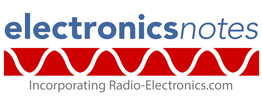Home » Component data » Transistor data » this page
2N3866 Transistor Data
Key transistor data for the 2N3866 RF power transistor including key electrical parameters, pinout, package type and many other key transistor datasheet details.
This is an NPN silicon high frequency transistor designed for amplifier and oscillator applications in a variety of forms of equipment.
It is suitable for output or pre-driver circuits in VHF and UHF equipment.
It has been also used by many radio amateurs in HF, VHF and even UHF transmitters, often as the output device for VHF and UHF.
Key details and performance parameters for the 2N3866 transistor.
| Transistor parameters & data |
|
|---|---|
| Parameters | Details |
| Transistor type | NPN silicon RF power transistor |
| Package type | TO39 |
| VCBO max (V) | 55 |
| VCEO max (V) | 30 |
| VEBOmax (V) | 3.5 |
| IC max (mA) | 400 |
| TJ Max °C | |
| PTOT W | 5 dissipation max |
| fT min (MHz) | 500 |
| COB | 3pF |
| hfe | 10 - 200 |
| IC for hfe | |
| Similar / equivalents | Comparable to 2N3553 |
Outline:
Pinout:
Explanation of transistor parameters
| Parameter | Explanation |
|---|---|
| VCBO Max | Maximum collector-base voltage with emitter open circuit . |
| VCEO Max | Maximum collector-emitter voltage with base open circuit. |
| VEBO Max | Maximum emitter-base voltage with collector open circuit. |
| VCEsat (included where applicable) | The voltage drop across the collector-emitter when the transistor is fully saturated (acting as a closed switch). |
| IC Max | Maximum collector current. |
| Parameter | Explanation |
|---|---|
| TJ | Maximum junction temperature. |
| PTOT Max | Maximum device dissipation normally in free air at 25°C unless other conditions indicated. |
| fT Min | Minimum cutoff frequency at which the current gain in a common emitter circuit falls to unity. |
| COB Max | Maximum collector capacitane, normally measured with emitter open circuit. |
| hFE | DC current gain for HFE at IC. [Note hfe is the small signal gain and although this may be slightly different, the transistor current gain will vary considerably from ne transistor to the next of the same type.] |
| PTOT Max | Maximum device dissipation normally in free air at 25°C unless other conditions indicated. |
These are the main transistor parameters that have been included in our list. There are others, but these help quantify the main elements of the performance of the transistor.
Please note, that the data given is the best estimate we can give within a tabulated summary of this nature. Parameters also vary between manufacturers. Electronics Notes cannot accept any responsibility for errors, inaccuracies, etc, although we do endevaour to ensure the data is as accurate as possible.
• Availability & sources
The 2N3866 is available from a number of stockists and electronic component distributors many of which are given in the table below.
2N3866 Component Distributor, Stock and Pricing
While the 2N3866 may not be as widely manufactured today as it once was, it remains a significant component in the history of RF electronics.
Many modern RF power transistors have evolved from earlier designs like the 2N3866, incorporating improvements in performance and reliability.
While the 2N3866 was originally manufactured by RCA, and it was also widely manufactured by Motorola, and other manufacturers may have produced compatible devices with similar specifications.
• Heatsink
A heatsink is often used with this transistor to enable it to provide its full output capability. This is normally in the form of a slip on extra onto the can, but remember the can is connected to the collector so care may be needed to ensure this does not physically touch other parts of the circuit and become shorted to ground,etc. Stray capacitance should also be remembered as well.
• Versatility
The 2N3866 has found applications in a wide range of electronic equipment, including:
Commercial Communication Equipment: Employed in various commercial communication systems, including land mobile radios and point-to-point communication links.
Industrial Equipment: Used in industrial electronics applications such as RF heating and industrial control systems.
Test Equipment: Utilised in various test and measurement equipment, including signal generators and spectrum analyzers.
Amateur Radio Transmitters: Used as output transistors in VHF and UHF amateur radio transmitters.
 Written by Ian Poole .
Written by Ian Poole .
Experienced electronics engineer and author.
Return to Component Data menu . . .




